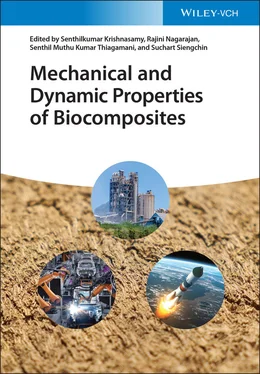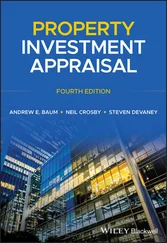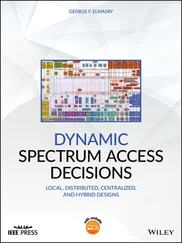Mechanical and Dynamic Properties of Biocomposites
Здесь есть возможность читать онлайн «Mechanical and Dynamic Properties of Biocomposites» — ознакомительный отрывок электронной книги совершенно бесплатно, а после прочтения отрывка купить полную версию. В некоторых случаях можно слушать аудио, скачать через торрент в формате fb2 и присутствует краткое содержание. Жанр: unrecognised, на английском языке. Описание произведения, (предисловие) а так же отзывы посетителей доступны на портале библиотеки ЛибКат.
- Название:Mechanical and Dynamic Properties of Biocomposites
- Автор:
- Жанр:
- Год:неизвестен
- ISBN:нет данных
- Рейтинг книги:4 / 5. Голосов: 1
-
Избранное:Добавить в избранное
- Отзывы:
-
Ваша оценка:
- 80
- 1
- 2
- 3
- 4
- 5
Mechanical and Dynamic Properties of Biocomposites: краткое содержание, описание и аннотация
Предлагаем к чтению аннотацию, описание, краткое содержание или предисловие (зависит от того, что написал сам автор книги «Mechanical and Dynamic Properties of Biocomposites»). Если вы не нашли необходимую информацию о книге — напишите в комментариях, мы постараемся отыскать её.
A comprehensive review of the properties of biocomposites and their applications Mechanical and Dynamic Properties of Biocomposites
Mechanical and Dynamic Properties of BIocomposites
Mechanical and Dynamic Properties of Biocomposites — читать онлайн ознакомительный отрывок
Ниже представлен текст книги, разбитый по страницам. Система сохранения места последней прочитанной страницы, позволяет с удобством читать онлайн бесплатно книгу «Mechanical and Dynamic Properties of Biocomposites», без необходимости каждый раз заново искать на чём Вы остановились. Поставьте закладку, и сможете в любой момент перейти на страницу, на которой закончили чтение.
Интервал:
Закладка:
Also, thermal properties of OPEFB/woven jute FRP epoxy hybrid composites were investigated by Jawaid et al. [47], using various temperatures. It was reported in their work that there was an increase in thermal stability when woven jute fibers were added to the EFB composite in its pure state. That is, hybridizing OPEFB with the woven jute fiber caused the thermal stability to be higher as compared with OPEFB fiber. The temperature of degradation was also reported to have shifted from a value of 292 °C to a higher value of 457 °C, leaving 12.1% char residue.
1.6 Progress and Future Outlooks of Mechanical Behaviors of Natural FRP Hybrid Composites
Application of various hybrid natural FRP composites is increasing with their innovative designs and developments through optimized manufacturing techniques. The advent of automation and robots in manufacturing of hybrid natural FRP composite materials has been improving their properties. This will increase in the next century, with synergy of sophisticated processes and techniques. Mechanical properties are most important responses that require serious attention during the design and fabrication of new hybrid natural FRP composites. Other properties of hybrid natural FRP composites, such as thermal, acoustic, electrical, water absorption, among others, are directly dependent on the mechanical behaviors.
The prospect for FRP composite materials is very high and bright. It is presumed that in the next decade, application of various hybrid natural FRP composite materials would have penetrated all facets of life. This will be made possible through enhanced mechanical behaviors of a new set of composites as fiber selection, extraction, treatment, interfacial adhesion with matrix, and processing of natural FRP composite are improved [6].
In addition, there have been significant developments in natural FRP hybrid composites in the past few decades, due to established advantages in terms of processing, low cost, biodegradability, renewability, high specific strength, sustainability, as well as low relative density. Various natural fiber types have been and are being studied, with the findings forming the basis for replacing synthetic fibers, including both carbon and glass. Primarily, the idea of biocomposites development centers around the generation of novel FRP composites that are environmentally friendly with respect to how they are produced, used, and discarded. Hence, natural FRP composites could be a valid replacement and even superior alternative to synthetic fiber composites. Their biodegradable nature offers a good solution to the problem of waste disposal often experienced with synthetic fiber, petroleum, or non‐renewable polymer‐based materials. The application of biocomposites is widening continually and is projected to expand more, with more effects in Europe, due to mounting legislative and public pressures.
Till now, adhesion between the natural reinforcements/fiber and matrix interface, as hybridization increases, remains a major object of concern in terms of overall performance of natural FRP hybrid composites. This is a major factor in the ultimate properties, especially mechanical responses of the biocomposites. Further cutting‐edge research is therefore necessary in order to overcome this challenge. Also, there is a requirement for more research work in order to get over other challenges such as inadequate toughness, moisture absorption, and stability reduction in long‐term outdoor applications. Particularly, various weather conditions, humidity, temperature, and ultraviolet radiation, have significant influence on the product service life of natural FRP hybrid composites. For example, ultraviolet exposure results in discoloring, property deterioration, and deformation.
c Lastly, identifying better extraction of raw materials, sustaining crop growth, product design, and manufacture are activities that will help to reach the goal of better natural FRP hybrid composites. Hence, further research is ongoing across the globe to overcome the aforementioned challenges of biocomposites. Their respective properties should form the basis for generating new applications and create more opportunities for these biocomposites in the present‐day green environment and secured future.
1.7 Conclusions
Owing to the sustainability, environmental friendliness, low cost of production, biodegradability, as well as enhanced mechanical behaviors of natural FRP composites through hybridization techniques, natural FRP composites are competing with and replacing some synthetic or conventional FRP composites, including both glass and carbon FRP composites. From the studies reported in this chapter, it is evident that mechanical behaviors of some natural FRP hybrid composites, especially impact, tensile, and flexural strengths and moduli, were higher than those of their non‐hybrid or single FRP counterparts. Also, the degree of mechanical responses of the natural FRP hybrid composites depends on various areas of their engineering applications, as structural, semi, and/or non‐structural composite systems.
References
1 1 Elsner, P., Henning, F., and Weidenmann, K.A. (2009). Composite materials. In: Technology Guide (ed. H.‐J. Bullinger), 24–29. Berlin, Heidelberg: Springer‐Verlag.
2 2 Bispoa, S.J.L., Freire, R.C.S., and De Aquinoa, E.M.F. (2015). Mechanical properties analysis of polypropylene biocomposites reinforced with curaua fibre. Mater. Res. 18 (4): 833–837.
3 3 Zuccarello, B. and Marannano, G. (2018). Random short sisal fibre biocomposites: optimal manufacturing process and reliable theoretical models. Mater. Des. 149: 87–100.
4 4 Nguyen, H., Zatar, W., and Mutsuyoshi, H. (2017). Mechanical Properties of Hybrid Polymer Composite. Elsevier Ltd.
5 5 Pickering, K.L., Efendy, M.G.A., and Le, T.M. (2016). A review of recent developments in natural fibre composites and their mechanical performance. Composites Part A 83: 98–112.
6 6 Faruk, O., Bledzki, A.K., Fink, H.P., and Sain, M. (2012). Biocomposites reinforced with natural fibres: 2000–2010. Prog. Polym. Sci. 37: 1552–1596.
7 7 Bergstrom, J.S. (2015). Mechanics of Solid Polymers: Theory and Computational Modeling. William Andrew.
8 8 Sathishkumar, T.P., Naveen, J., and Satheeshkumar, S. (2014). Hybrid fibre reinforced polymer composites – a review. J. Reinf. Plast. Compos. 33 (5): 454–471.
9 9 Kuma, T.S.M., Senthilkumar, K., Chandrasekar, M. et al. (2019). Investigation into mechanical, absorption and swelling behaviour of hemp/sisal fibre reinforced bioepoxy hybrid composites: effects of stacking sequences. Int. J. Biol. Macromol. 140: 637–646.
10 10 Fragassa, C. (2016). Effect of natural fibres and bio‐resins on mechanical properties in hybrid and non‐hybrid composites. AIP Conference Proceedings, Volume 1736.
11 11 Saw, S.K., Sarkhel, G., and Choudhury, A. (2012). Effect of layering pattern on the physical, mechanical and thermal properties of Jute/Bagasse hybrid fibre‐reinforced epoxy novolac composites. Soc. Polym. Eng. 33 (10): 1824–1831.
12 12 Wambua, P., Ivens, J., and Verpoest, I. (2003). Natural fibres: can they replace glass in fibre reinforced plastics? Compos. Sci. Technol. 63 (9): 1259–1264.
13 13 Santulli, C., Janssen, M., and Jeronimidis, G. (2005). Partial replacement of E‐glass fibres with flax fibres in composites and effect on falling weight impact performance. J. Mater. Sci. 40 (13): 3581–3585.
14 14 Almeida Júnior, J.H.S., Ornaghi Júnior, H.L., Amico, S.C., and Amado, F.D.R. (2012). Study of hybrid intralaminate curaua/glass composites. Mater. Des. 42: 111–117.
15 15 Santulli, C. (2007). Impact properties of glass/plant fibre hybrid laminates. J. Mater. Sci. 42 (11): 3699–3707.
Читать дальшеИнтервал:
Закладка:
Похожие книги на «Mechanical and Dynamic Properties of Biocomposites»
Представляем Вашему вниманию похожие книги на «Mechanical and Dynamic Properties of Biocomposites» списком для выбора. Мы отобрали схожую по названию и смыслу литературу в надежде предоставить читателям больше вариантов отыскать новые, интересные, ещё непрочитанные произведения.
Обсуждение, отзывы о книге «Mechanical and Dynamic Properties of Biocomposites» и просто собственные мнения читателей. Оставьте ваши комментарии, напишите, что Вы думаете о произведении, его смысле или главных героях. Укажите что конкретно понравилось, а что нет, и почему Вы так считаете.












